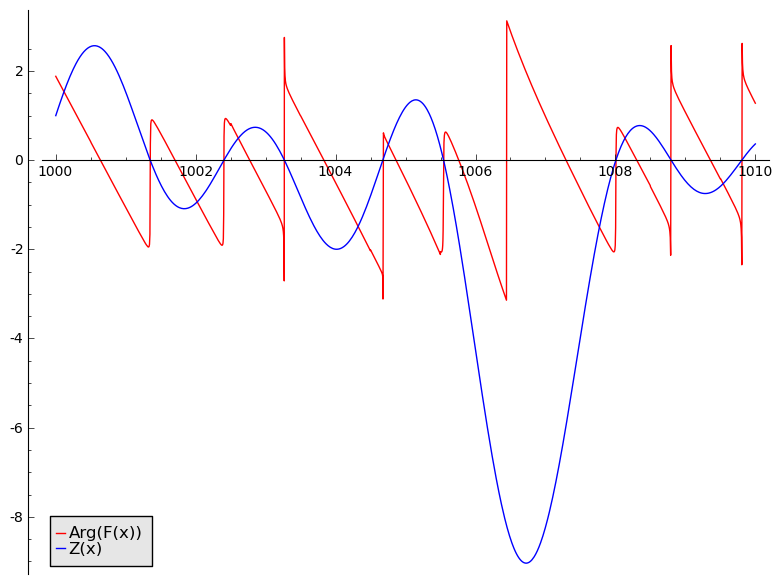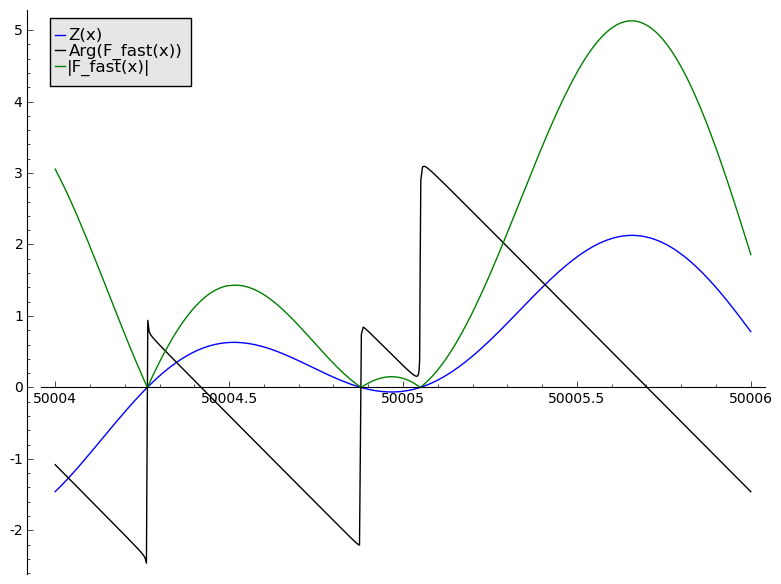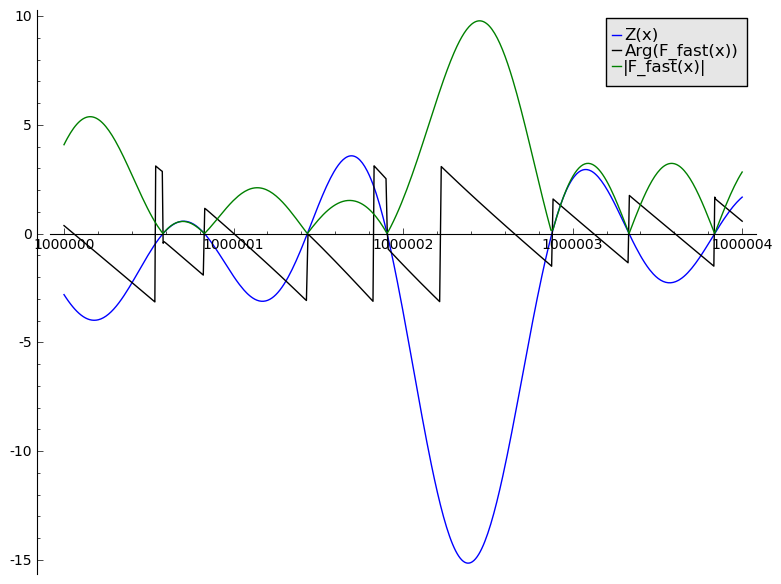For $t \in \mathbb{R}$ define $$ F(t) = \sum_{n=1}^{[t]} \frac{(-1)^{(n-1)}}{n^{\frac12 + it}}$$
Let $\operatorname{Arg}(t)$ be $\operatorname{atan2}(\Im t , \Re t)$ - basically this is $\arctan$, but the sign depends on the quadrant.
Observation $\operatorname{Arg}(F(t))$ jumps (usually from negative to positive) very near all nontrivial zeta zeros on the critical line and in seemingly rare occasions without zeros. Computing $F(t)$ the naiive way is not efficient for me.
$F(t)$ is truncated Dirichlet eta function on the critical line, but it is not $0$ at zeros of zeta, though $|F(t)|$ has local minima near zeros.
Added Wolfram Alpha found closed form for $F(t)$ in terms of Hurwitz zeta and zeta:
\begin{align} & \sum_{n=1}^k\frac{(-1)^{n-1}}{n^{\frac12 + i t}} = \\ & 2^{-1/2-i t}(-(-1)^k \zeta(i t+1/2, (k+1)/2)+ \\ & (-1)^k \zeta(i t+1/2, (k+2)/2)+2^{1/2+i t} \zeta(1/2 i (2 t-i))-2 \zeta(1/2 i (2 t-i))) \end{align}
Setting $k=[t]$ gives $F(t)$. Numerical evidence supports the closed form.
In comments Greg Martin suggested $F(t)$ might not be correlated to higher zeros, though numerical evidence suggests it is correlated at height $10^6$, including closely spaced zeros.
Another observation is $|F(t)|$ appears to have local minima close to zeta zeros on the critical line.
Setting $$ G(t) = \sum_{n=1}^{[t]} \frac{(-1)^{(n-1)}}{n^{1 + it}}$$
the jumps of $G(t)$ appear zeros of $\eta(1+i t)$ and looks like $|G(t)| \sim |\eta(1 + i t)|$
Can this be explained?
Counterexamples?
Plot:






